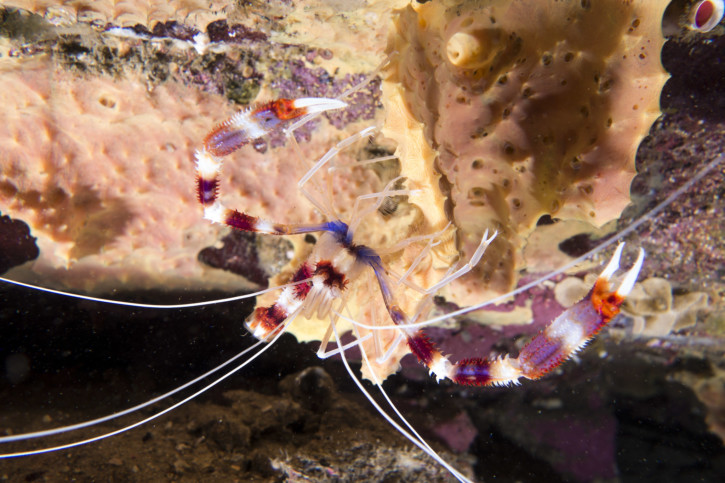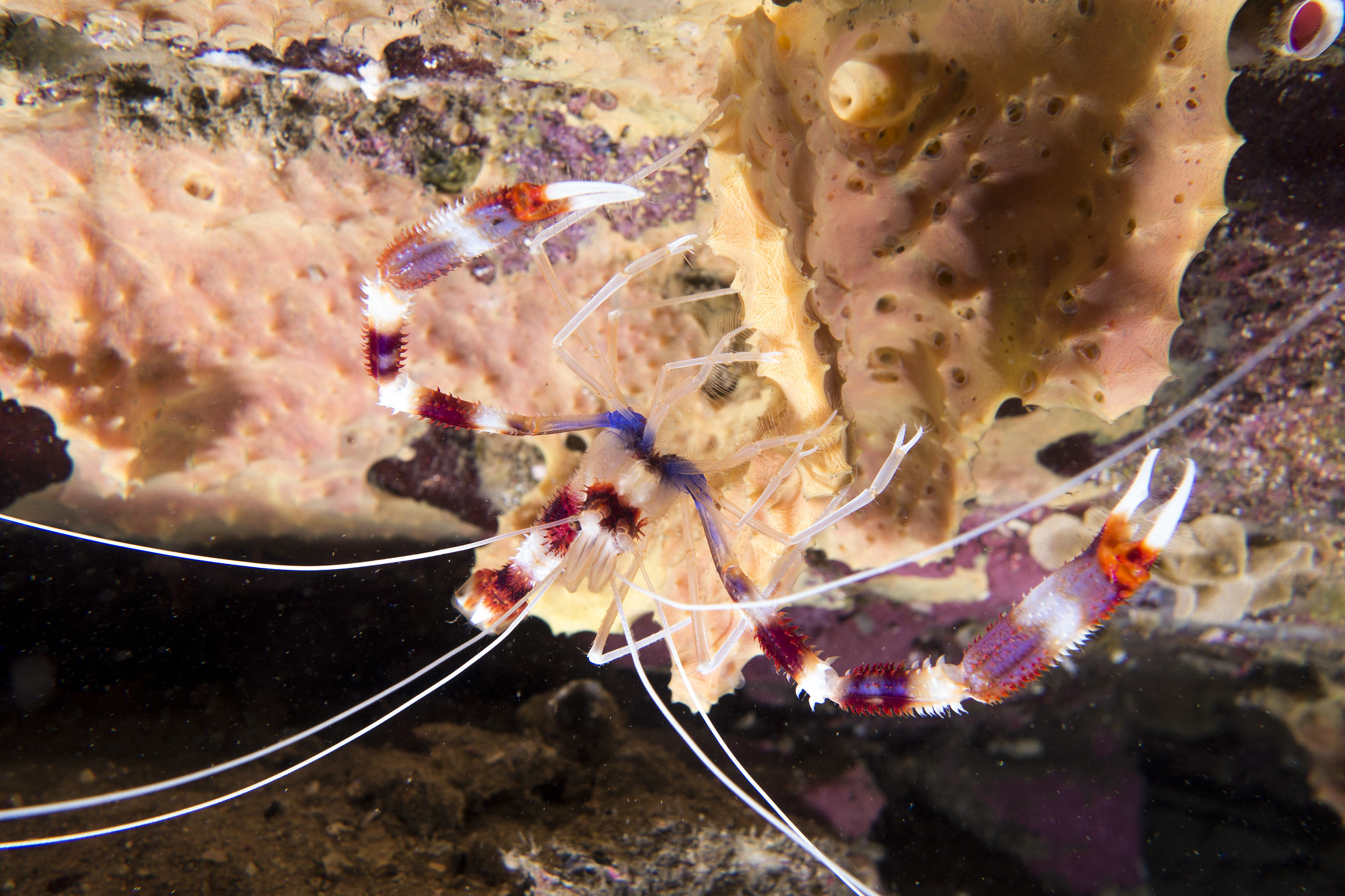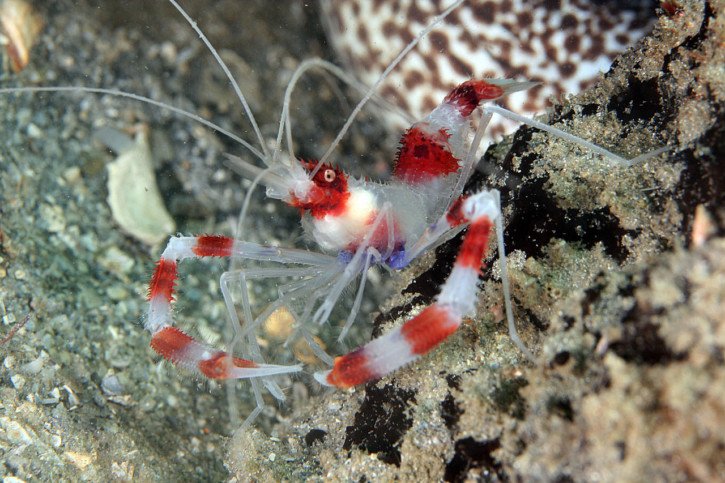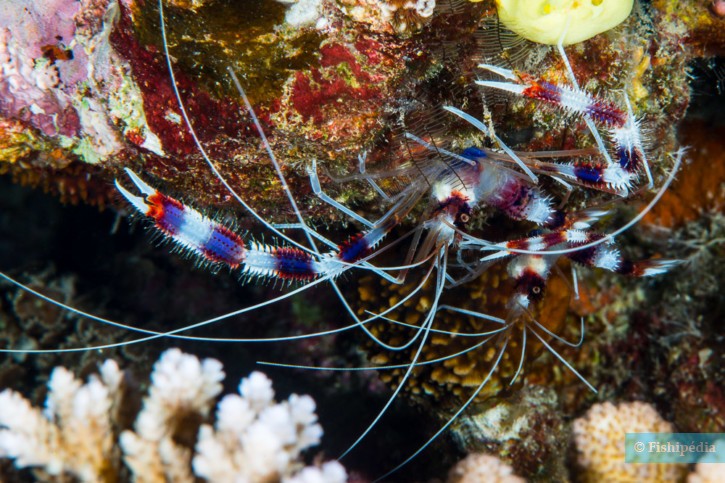Introduction
Stenopus Hispidus, commonly known as banded coral shrimp, is a fresh water crustacea.
This sheet is currently being prepared. The texts currently proposed come from our data model or are being drafted. To request priority for this content, you can write to us HERE.
Who is it?
Morphology
-
Average size7 cm
-
Maximum size9 cm
-
Longevity3 year
-
Average size7 cm
-
Maximum size9 cm
-
Longevity3 year
How to recognize this crustacea ?
The banded coral shrimp measures between 7 and 9 cm.
Of elongated form, like all the shrimps, it has 5 pairs of legs and a segmented carapace at the level of the abdomen which ends in a tail in fan cut for swimming.
This species belongs to the "long arm shrimp" group because its second pair of claws is of imposing size. These appendages are used mainly to defend themselves, but also to catch food.
Behaviour & Life cycle
-
Sociabilityliving as a couple or alone
-
territorialNo
-
VenomousNo
-
Way of livingdiurnal
Like all crustaceans, The banded coral shrimp molts whenever it becomes cramped in its shell. Before the hardening of its new body, it is more vulnerable and spends a good part of its time hidden. This mechanism, very complex, allows the periodic renewal of the exoskeleton and part of the internal skeleton. It is also during the moult that the females become fertile.
The banded coral shrimp is a crustacea living as a couple or alone. This species is scavenger .
Although the banded coral shrimp is non-territorial, it is sometimes aggressive towards other species. In a constant quest for dominance, the dominant males of this species cannot stand each other. The battle between two individuals can be intense and violent. It will result in the submission and sometimes even death of one of the protagonists.
The banded coral shrimpis not a very good swimmer, especially when it reaches adulthood. It moves mainly with the help of its legs.
The banded coral shrimp has a tendency to dig the ground and bury itself in caves to take refuge.
Reproduction
-
Migratory speciesYes
Harmless species
This species does not represent any particular threats to humans when encountered in its natural environment.
Origin and distribution
What is its habitat?
Natural environment characteristics
-
Temperature24 - 28 °C
-
pH (acidity)8 - 8.2
-
gh (hardness)1020 - 1025
Biotope presentation
To go further
Sources & Contributions
Participation & Validation
The Fishipedia team and specialist contributors are committed to providing high-quality content. However, although the information comes from scientific sources or testimonials from specialists, the cards may contain inaccuracies.
Translation
Translation done with the valuable contribution of our translators, who make this information available to a wider audience. We sincerely thank them for their commitment.
Scientific partners
Tags




















